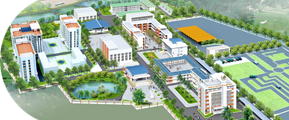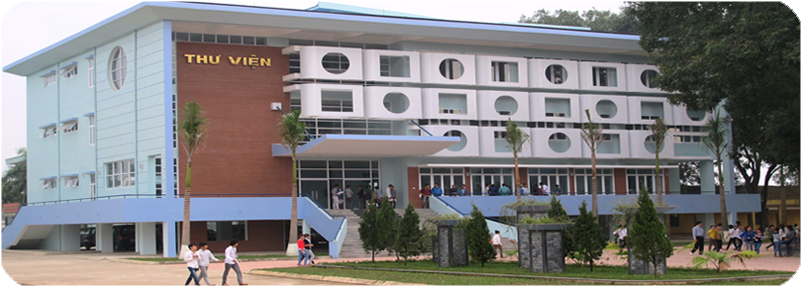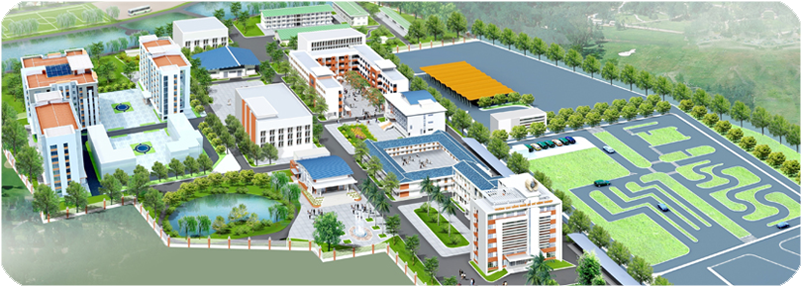Strategy of training development
a. Aims
Renewing and diversifying training activities; widening training scale, improving training quality and efficiency, catching up training standard of advanced countries in the region and accessing to international standards, meeting the requirements of industrialization and modernization in agriculture and rural development, developing the brand of Vocational College of Agricultural Mechanics.
For the period 2009 – 2015, the College’s detailed targets can be presented as below:
- Diversifying training activities
- Diversifying vocational subjects
Strengthening and developing traditional vocations, training work force for mechanization, electrification and modernization in agriculture and rural area (including the fields such as agriculture, forest, irrigation, aquiculture, etc.) Teaching new vocational subjects, meeting the demands of economic sectors in industrialization and modernization process, focusing on 4 key vocations for training work force for focal economic sectors.
Developing professional training programs, updating knowledge of new technologies, updating programs on agriculture and forestry promotion, training programs for labor export or at enterprises’ or local demand.
- Diversifying training levels
Training learners at three levels: primary vocation, intermediate vocation and vocational college. Training continuum and improving qualification at demand of learners. Training university students in practical technology courses.
- Diversifying training modes
Learners will be trained centrally, in continuum or in-experience study, both inside and outside the College. Students of coordinating training will get the degree by the College or by its partner, creating some coordinating training centers in Northern provinces.
- Developing training scale
- Increasing training quality and efficiency
- Aiming to standard training quality, in which key vocational subjects will meet training standard of advanced countries in the region with many international and national excellent students, building up the College’s brand.
- The College’s graduates are expected to be good at knowledge and skills of their jobs, as active and creative as enterprises’ requirements, able in continuous self study. 100% of the graduates can get jobs right after they leave the College, of which 80% are trained for ready available working addresses.
- Standardized training quality with appropriate fees, which ensures the College’s competitiveness.
- a. Solutions
- Setting up professional enrollment procedure which is suitable with the College’s conditions.
- Creating close relationship between training and labor market through vocational orienting projects of the localities or the divisions; doing market investigation, predicting market’s demand for labors to clarify vocational structure. Making close relationships with enterprises to send students coming for the practicum time or for teachers visiting to master new technology or collecting feedback to adjust training activities. Establishing a department for collecting market information to bridge between enterprises and the College. Signing training contracts with enterprises.
- Managing, teaching and official staffs practice to be active, clear-headed in building training regulations, solutions with flexible policies and detailed action plans to achieve the proposed aims.
- Supplementing teaching staff, infrastructure and other resources to be standardized, modernized, meeting the demand of increasing training scale and quality.
- Renovating training content and building up training standard:
Annually, the College will apply vocation analysis methodology and modern developing program methodology, coordinates with improving qualification for teachers to build up, evaluate and complete training programs. Those programs will be designed to combine training with practicing of new technologies and ensure that time for theoretical lessons and practical lessons of informatics, foreign languages will be as stipulated at international training standard.
Developing enough textbooks and teaching materials, building up vocational training standards which are similar to national and international ones, completing the circular training programs, importing some advanced training programs of other countries.
- Renovating teaching methodology
Applying teaching software and supporting equipments. Changing gradually from traditional teaching methodology to modern one, learner-centered teaching methodology, which motivates learners’ activeness. Gradually applying interactive learning methodology, reducing time for teacher’s giving speech but increasing time for students’ discussion. Teachers will be instructors who set up learning environment. Students will be active in perceiving knowledge.
- Strengthening training management, setting up the training supporting division to help teachers apply modern training standard. Increasing such activities as teaching festivals, class attendance, profession discussions, excellent students’ contests, vocational contest, etc.
- Strengthening partnerships with internal and external enterprises, setting up coordinating training centers of the College located in other localities and coordinating training centers between the College and other ones located at the College’s campus. Strengthening relationships with agriculture and forestry promotion centers of provinces.
- Organizing the training quality evaluation, annually evaluating or inviting organizations inside and outside the country to evaluate training quality based on vocational skills standards.


























